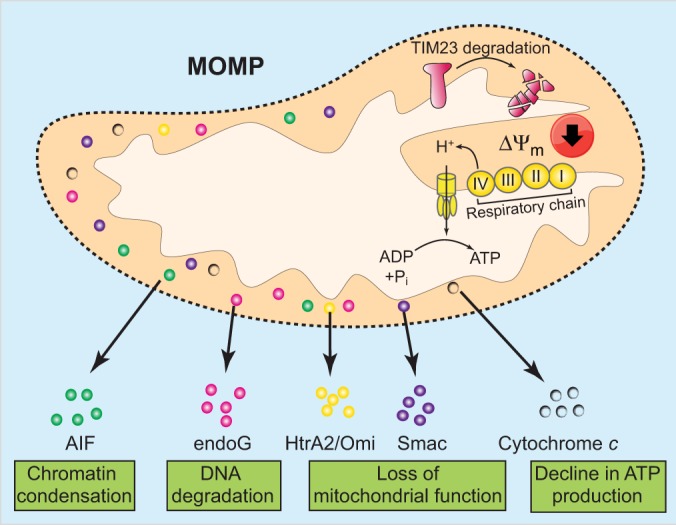Fig. 4.

Mechanism of mitochondrial permeabilisation-mediated caspase-independent cell death. Following mitochondrial outer membrane permeabilisation, various intermembrane-space proteins such as Smac, HtrA2/Omi and cytochrome c are released into the cytoplasm. Some of these, such as AIF and endoG, might actively kill the cell in a caspase-independent manner. Over time, mitochondrial functions also decline following outer membrane permeabilisation. This dysfunction includes a loss of mitochondrial protein import due to cleavage of TIM23 and degradation of cytochrome c. Collectively, these events lead to progressive loss of respiratory chain function (complex I to IV) and reduced mitochondrial membrane potential (ΔΨm). Ultimately, this leads to bioenergetic crisis and cell death.
